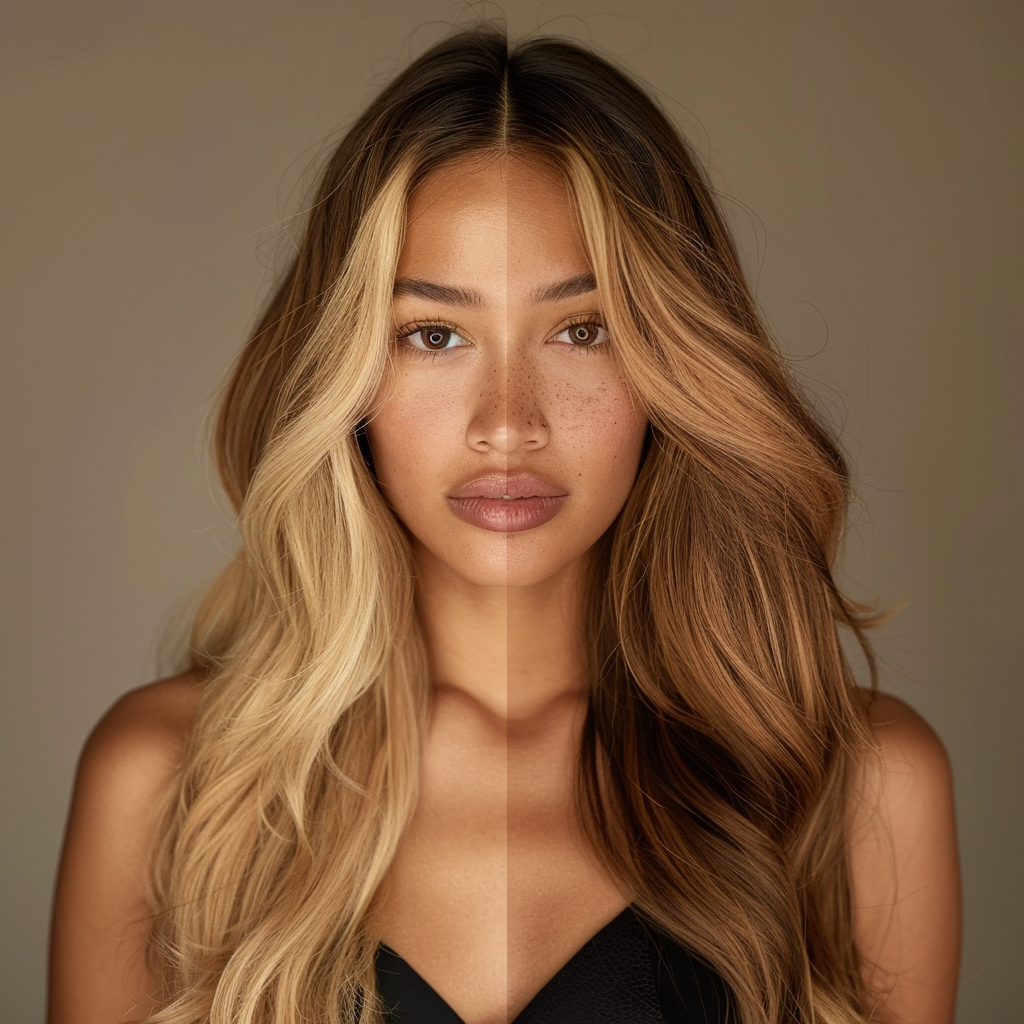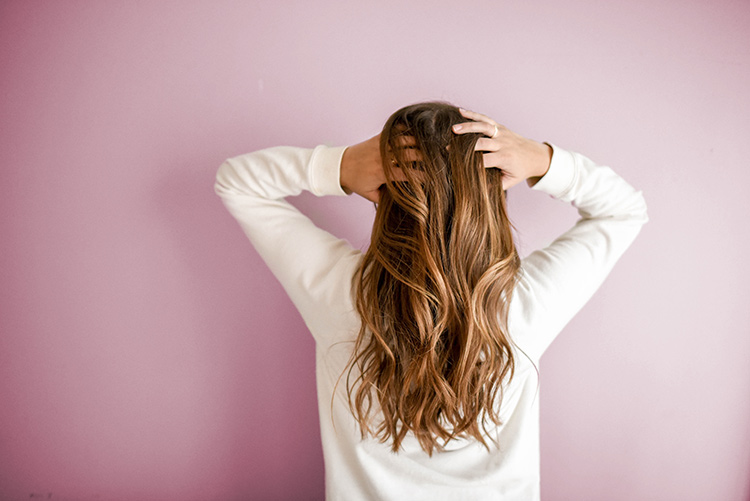Balayage Vs. Traditional Highlights: What’S the Difference?
Balayage and traditional highlights differ significantly in technique and effect. Balayage involves freehand painting to create a natural, sun-kissed look with soft, warmer tones and less noticeable regrowth, making it low-maintenance. Traditional highlights use foils or caps for precise, structured placements, resulting in bold contrasts and a more defined, vibrant effect. However, they require frequent touch-ups. Balayage offers greater customization and quicker application, while highlights provide reliable consistency with striking color. Understanding these distinctions can help you choose the best method to match your desired style and upkeep preferences. Interested in more insights on these popular techniques?
What Is Balayage?
Balayage is a sophisticated hair coloring technique where color is meticulously hand-painted onto the hair’s surface, creating a natural, sun-kissed effect. By eschewing foils, balayage allows for seamless blending and a soft, natural effect. The process starts from the middle to the top of the hair, ensuring a smooth shift and depth in the color. This method offers a customizable color placement and results in a low-maintenance style that grows naturally. Unlike traditional highlights, which can create stark contrasts and noticeable regrowth, balayage provides a more subtle, sun-kissed look. Its freehand painting technique caters to those seeking a personalized, less structured approach to hair coloring, echoing a desire for freedom and individuality.
The Balayage Technique
Building on its customizable and natural appeal, the balayage technique involves a meticulous, freehand painting method that starts at the nape and moves towards the crown, ensuring seamless color waters. This freehand painting technique allows for subtle highlights that mimic the natural, sun-kissed effect in hair naturally lightened by the sun. The balayage technique offers unparalleled freedom in color placement, enabling a bespoke look tailored to your individual style. Its appeal lies in the soft shifts and warmer tones it produces, especially effective for dark blondes seeking a blended, low-maintenance color solution. By avoiding foils, balayage ensures a more natural, less harsh regrowth, perfect for those wanting a sophisticated yet effortless hair transformation.
Understanding Highlights
Utilizing foils or caps, traditional highlights precisely place color on specific sections of hair, resulting in a structured and vibrant effect. By leveraging advanced sectioning techniques like weaving and back-combing, stylists can achieve impeccable precision in color placement. This method allows for striking contrast and defined streaks, making it ideal for a bold transformation. Traditional highlights offer a more rigid pattern than the natural flow of balayage, and they demand regular touch-ups to maintain their vividness. Industry trends show that while some prefer the controlled structure of traditional highlights, others lean towards more freeform techniques. Ultimately, understanding highlights means recognizing how they can offer a meticulously crafted, dynamic look that stands out.
Traditional Highlighting Process
For those seeking precise and defined color placement, traditional highlighting utilizes foils or caps to achieve a uniform and vibrant effect with noticeable contrast. In this process, stylists meticulously section your hair, wrapping selected strands in foils to isolate and control the lightening effect. This technique guarantees defined color placement and heightened color intensity, creating bold, structured highlights. Unlike freehand methods, traditional highlights offer a predictable and consistent outcome, making it favored for achieving dramatic contrast. Regular touch-ups are necessary to maintain a vibrant look and manage regrowth. Traditional highlighting remains a staple in salons for its ability to deliver striking, high-intensity results with expert precision.
Balayage Vs. Highlights: Key Differences
When comparing balayage and traditional highlights, their application techniques and resulting aesthetic effects are the most significant differences. Balayage uses hand-painting color to create a natural, sun-kissed look with seamless blending. Due to its subtle regrowth, it’s a low-maintenance option, ideal for those seeking freedom from frequent salon visits. In contrast, traditional highlights utilize foils for precise color placement, producing a bold contrast and more noticeable regrowth. This method involves a systematic sectioning pattern, ensuring controlled tonal outcomes. While balayage offers a personalized, quicker application process, traditional highlights provide a structured, high-contrast effect. Understanding these key differences in balayage vs highlights helps tailor your choice to your lifestyle and aesthetic goals.
Pros and Cons of Each
Although both balayage and traditional highlights offer unique benefits, understanding their pros and cons can help you make an informed decision tailored to your hair goals. Balayage provides a natural, sun-kissed look with:
- Low maintenance: Subtle regrowth means fewer touch-ups.
- Customizable placement: Versatile and tailored to your preferences.
- Cost-effective: Long-term savings due to infrequent salon visits.
Conversely, traditional highlights deliver a more uniform color effect with:
- Defined placement: Precise coloration using foils or caps.
- Bold contrast: Dramatic differences between base color and highlights.
- Frequent touch-ups: Noticeable regrowth requires regular maintenance.
In the balayage vs traditional highlights debate, weigh these factors to find the best fit for your lifestyle and aesthetics.
Choosing the Right Technique
Selecting the right hair coloring technique hinges on understanding your hair type, lifestyle, and aesthetic goals. Balayage might be your best bet if you seek a low-maintenance, natural look. This subtle balayage method involves freehand painting, creating a sun-kissed effect with seamless blending. Ideal for those who prefer less frequent salon visits, balayage suits various hair lengths, textures, and colors. Conversely, traditional highlights use foils or caps for precise, bold color placement, making it perfect for those wanting a defined contrast. This lightening hair color technique requires more upkeep due to noticeable regrowth. Consider your daily routine, desired intensity, and maintenance preferences when choosing between these hair color techniques.
Conclusion
Choosing between balayage and traditional highlights ultimately hinges on your desired look and maintenance level. Balayage offers a naturally sun-kissed, low-maintenance style, perfect for a seamless blend. Traditional highlights provide bold, striking contrasts but demand more upkeep due to noticeable regrowth. By understanding each technique’s intricacies and aligning them with your lifestyle and hair type, you can confidently select the method that best meets your aesthetic goals and maintenance preferences.

